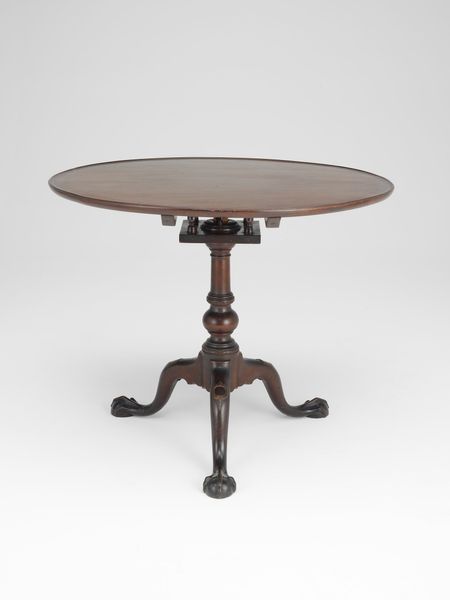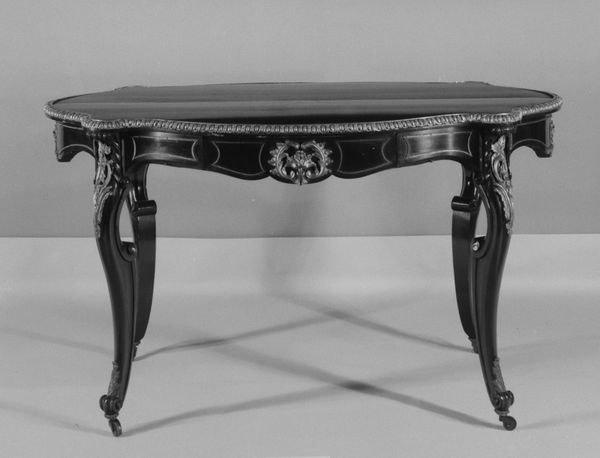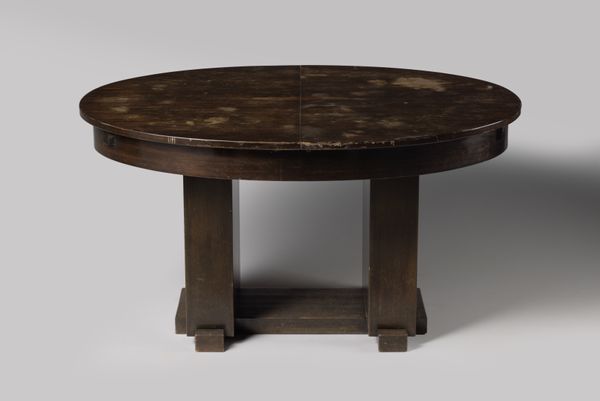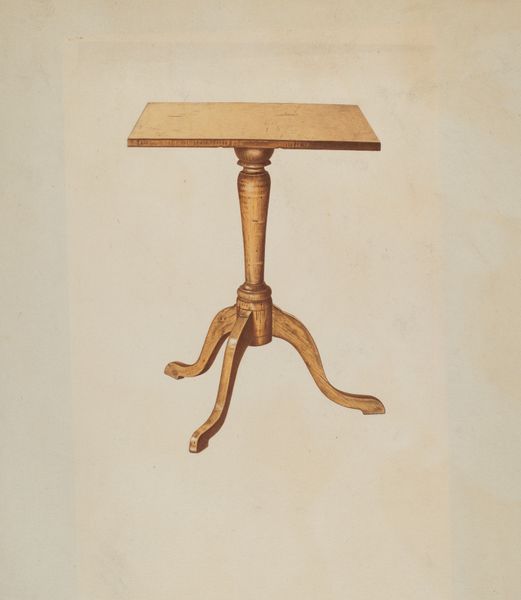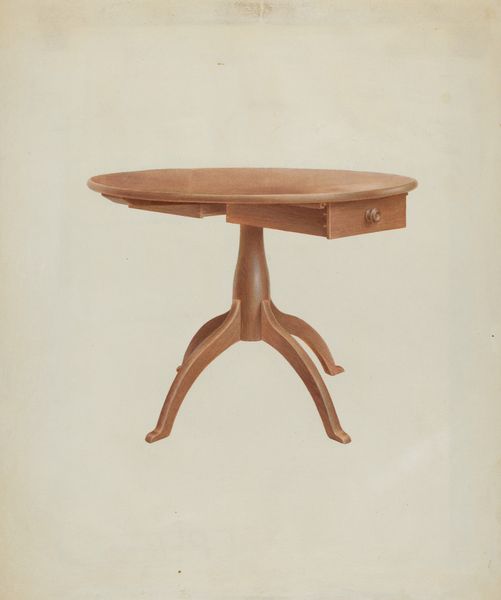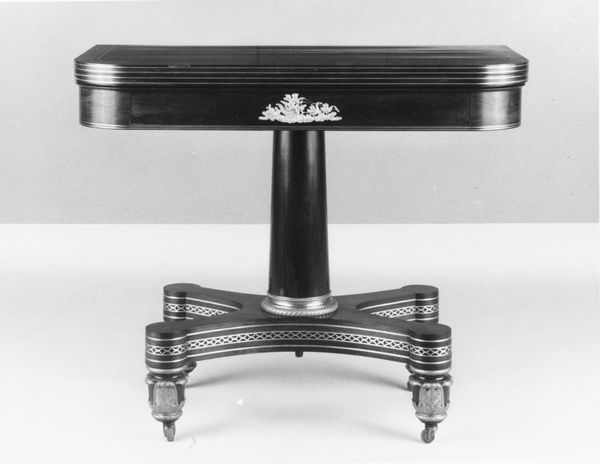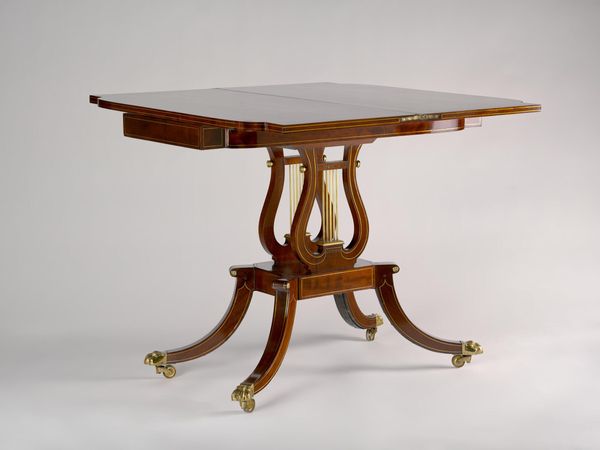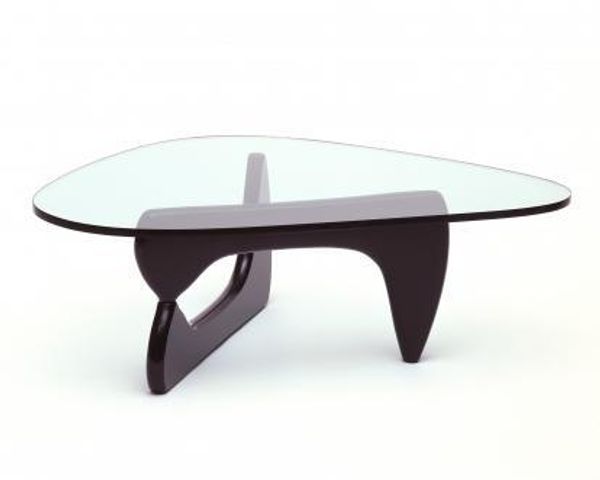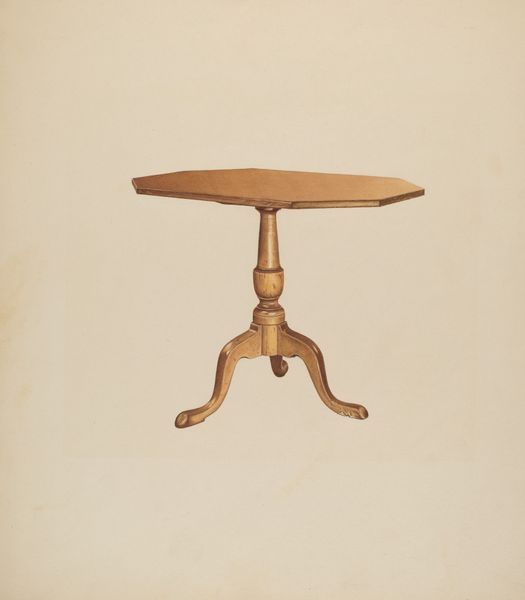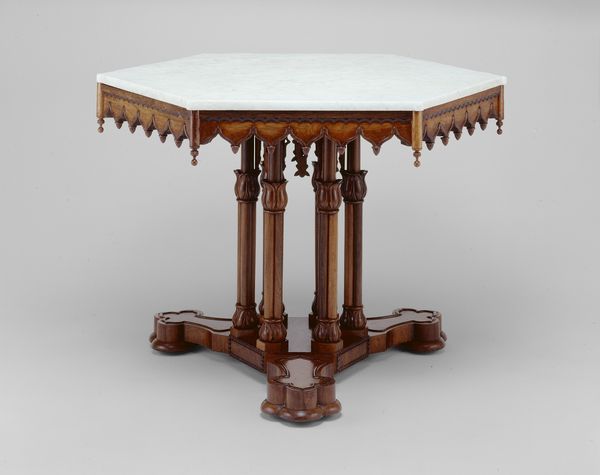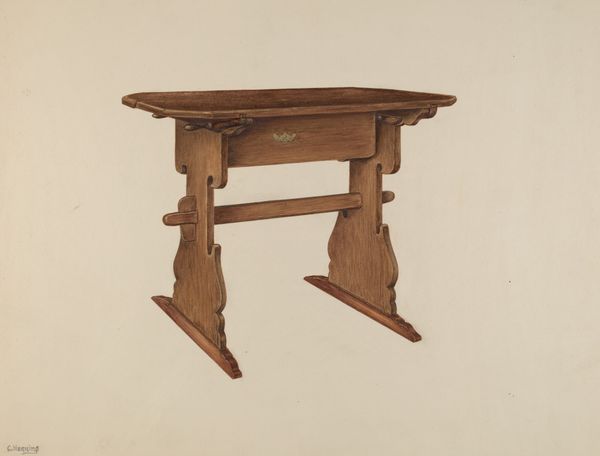
carving, wood
#
neoclacissism
#
carving
#
sculpture
#
furniture
#
black and white theme
#
geometric
#
classicism
#
black and white
#
united-states
#
wood
#
decorative-art
Dimensions: 28 5/8 x 45 5/8 x 35 1/4 in. (72.7 x 115.9 x 89.5 cm)
Copyright: Public Domain
This Pembroke Table was made in New York City, probably in the early 19th century, by the workshop of Duncan Phyfe. It's crafted primarily from mahogany, a prized wood for its rich color and fine grain, and its legs terminate in brass claw feet. Consider how the qualities of the mahogany influenced its appearance. Its density allows for precise carving, evident in the detailed ornamentation on the central pedestal and legs. The table’s design reflects Phyfe's engagement with neoclassical styles, adapting them to suit the tastes of a burgeoning American elite. The production of such furniture involved a specialized division of labor, with skilled craftsmen executing Phyfe's designs. The table speaks to broader economic and social currents of the time, including the growth of urban centers, the expansion of trade networks, and the increasing demand for luxury goods among a wealthy merchant class. The use of mahogany, sourced from distant lands, connects the table to global systems of trade and resource extraction. By attending to the materials, making, and context of this Pembroke Table, we gain insight into the complex interplay between aesthetics, craftsmanship, and society in early America.
Comments
No comments
Be the first to comment and join the conversation on the ultimate creative platform.
